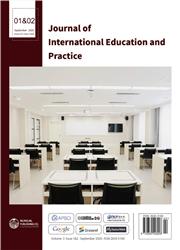Guessing and Nature of Multidimensionality Matter: A Cautionary Note on the Use of Fit Indices to Assess Unidimensionality of Binary Data
引用次数: 0
Abstract
Use of cutoff values for model fit indices to assess dimensionality of binary data representing scores on multiple-choice items is a popular approach among researchers and practitioners, and the commonly used cutoff values are based on simulation studies that used as the generating model factor analysis models, which are compensatory models without modeling guessing. Consequently, it remains unknown how those cutoff values for model fit indices would perform when (a) guessing exists in data, and (b) data follow a noncompensatory multidimensional structure. In this paper, we conducted a comprehensive simulation study to investigate how guessing affected the statistical power of commonly used cutoff values for RMSEA, CFA, and TLI (RMSEA > 0.05; CFA < 0.95; TLI < 0.95) to detect violation of unidimensionality of binary data with both compensatory and noncompensatory models. The results indicated that when data were generated with compensatory models, increase of guessing values resulted in the systematic decrease of the power of RMSEA, CFA, and TLI to detect multidimensionality and in some conditions, a small increase of guessing value can result in dramatic decrease of their statistical power. It was also found that when data were generated with noncompensatory models, use of cutoff values of RMSEA, CFA, and TLI for unidimensionality assessment had unacceptably low statistical power, and while change of guessing magnitude could considerably change their statistical power, such changes were not systematic as in the compensatory models.多维物质的猜测和性质:关于使用拟合指数评估二元数据的单维性的警告
使用截断值作为模型拟合指标来评估代表多项选择题得分的二元数据的维度是研究人员和实践者普遍采用的一种方法,通常使用的截断值是基于模拟研究作为生成模型的因子分析模型,这是一种没有建模猜测的补偿模型。因此,当(a)数据中存在猜测,(b)数据遵循非补偿性多维结构时,模型拟合指数的截止值将如何执行仍然未知。在本文中,我们进行了全面的模拟研究,以探讨猜测如何影响RMSEA, CFA和TLI的常用截止值的统计能力(RMSEA bb0 0.05;Cfa < 0.95;TLI < 0.95)来检测补偿和非补偿模型下二进制数据的单维性违反。结果表明,在使用补偿模型生成数据时,猜测值的增加会导致RMSEA、CFA和TLI检测多维度的能力系统性下降,在某些情况下,猜测值的小幅增加会导致它们的统计能力急剧下降。我们还发现,当使用非补偿模型生成数据时,使用RMSEA、CFA和TLI的截止值进行单维性评估的统计能力低得令人无法接受,虽然猜测幅度的变化可以显著改变其统计能力,但这种变化不像补偿模型那样具有系统性。
本文章由计算机程序翻译,如有差异,请以英文原文为准。
求助全文
约1分钟内获得全文
求助全文

 求助内容:
求助内容: 应助结果提醒方式:
应助结果提醒方式:


